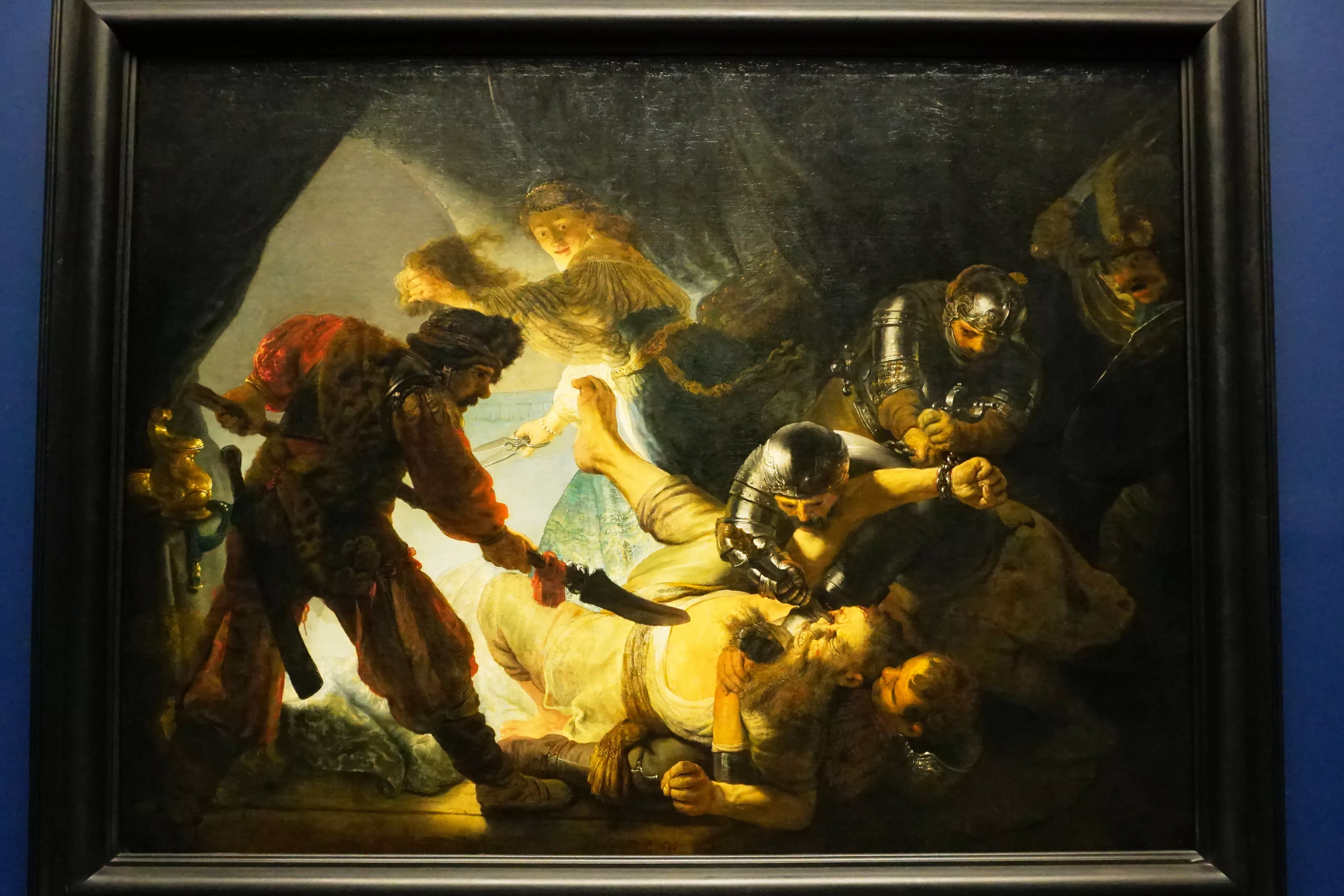The story of Susanna and the Elders is a well-known tale from the Old Testament. It is a story of attempted rape and false accusations, and it has been the subject of many paintings throughout the ages. The story of Susanna and the Elders is found in the book of Daniel, in the Apocrypha. The Apocrypha is a collection of religious texts that are not included in the Protestant Bible, but are included in the Catholic and Orthodox Bibles.
The story of Susanna and the Elders takes place in Babylon, during the reign of Nebuchadnezzar. Susanna is a beautiful and virtuous woman who is married to Joakim. One day, while Susanna is bathing in her garden, two elders who are judges in the city, spy on her and become entranced by her beauty. They approach her and demand that she sleep with them, threatening to accuse her of adultery if she refuses. Susanna refuses their advances, and the elders accuse her of adultery. She is brought to trial, where she is found guilty and sentenced to death by stoning.

At this point, the story takes a miraculous turn. Daniel, a young man who has been given the gift of prophecy, steps forward and questions the elders separately. He asks each of them where they saw Susanna and what they were doing there. Their answers contradict each other, and Susanna is acquitted of the false charges. The elders are then stoned to death for their false accusations.
The story of Susanna and the Elders has been the subject of many paintings throughout history. Each artist has attempted to capture the drama and tension of the story in their own unique way. One of the most famous paintings of Susanna and the Elders is by the Italian artist, Tintoretto.

Tintoretto‘s painting, which is in the collection of the Gemäldegalerie Alte Meister in Dresden, is a large-scale work that captures the drama of the story. Susanna is depicted as a beautiful, but vulnerable woman who is being accosted by two older men. She is looking away from them, her arms crossed protectively over her chest. The two elders are depicted as lecherous and menacing figures, looming over her.

Another famous painting of Susanna and the Elders is by the Dutch artist, Rembrandt. Rembrandt’s painting, which is in the collection of the Mauritshuis in The Hague, is a smaller work that focuses more on the emotional impact of the story. Susanna is depicted as a frightened and vulnerable woman, clutching her robes to her chest. The elders are depicted as shadowy figures, lurking in the background.

Artemisia Gentileschi, an Italian Baroque painter, also painted a version of the story of Susanna and the Elders. Her painting, which is in the collection of the Kunsthistorisches Museum in Vienna, is notable for its depiction of Susanna as a strong and powerful woman. In Gentileschi’s painting, Susanna is not a passive victim, but a woman who is fighting back against her attackers. She is shown grappling with one of the elders, while the other elder looks on in shock.

Frank Stuck, a German painter, also painted a version of the story of Susanna and the Elders. His painting, which is in the collection of the Neue Pinakothek in Munich, is notable for its use of color and light. Susanna is depicted as a luminous figure, bathed in a soft, golden light. The two elders are depicted as dark, shadowy figures, lurking in the background.
Massimo Stanzione, an Italian Baroque painter, also painted a version of the story of Susanna and the Elders. His painting, which is exhibited at the Stadel museum in Frankfurt, is a vivid and dramatic portrayal of the story. Susanna is depicted as a young woman with flowing brown hair, standing at the edge of a pool. Two old men approach her from either side, leering at her and grabbing at her robes. Susanna’s expression is one of fear and dismay, while the men’s expressions are predatory and menacing.
Stanzione’s use of light and shadow is particularly striking in this painting. The scene is lit from above, casting deep shadows on the faces of the two elders.
Susanna’s face is illuminated, drawing the viewer’s attention to her expression of distress. The pool behind her is also illuminated, creating a sense of depth and space.
Stanzione’s painting captures the horror and injustice of Susanna’s situation. It is a powerful reminder of the dangers of unchecked power and the importance of speaking truth to power.
In conclusion, the story of Susanna and the Elders is a powerful and important tale from the Old Testament. It has inspired countless artists throughout the ages, each of whom has attempted to capture the drama and tension of the story in their own unique way. From Tintoretto’s grand-scale painting to Stanzione’s vivid and dramatic portrayal, each artist has contributed to our understanding of this important story. The story of Susanna and the Elders continues to resonate with us today, reminding us of the importance of justice, truth, and the fight against abuse of power.















wonderful post, very informative. I ponder why the opposite specialists of this sector don’t realize this. You must continue your writing. I’m confident, you have a great readers’ base already!